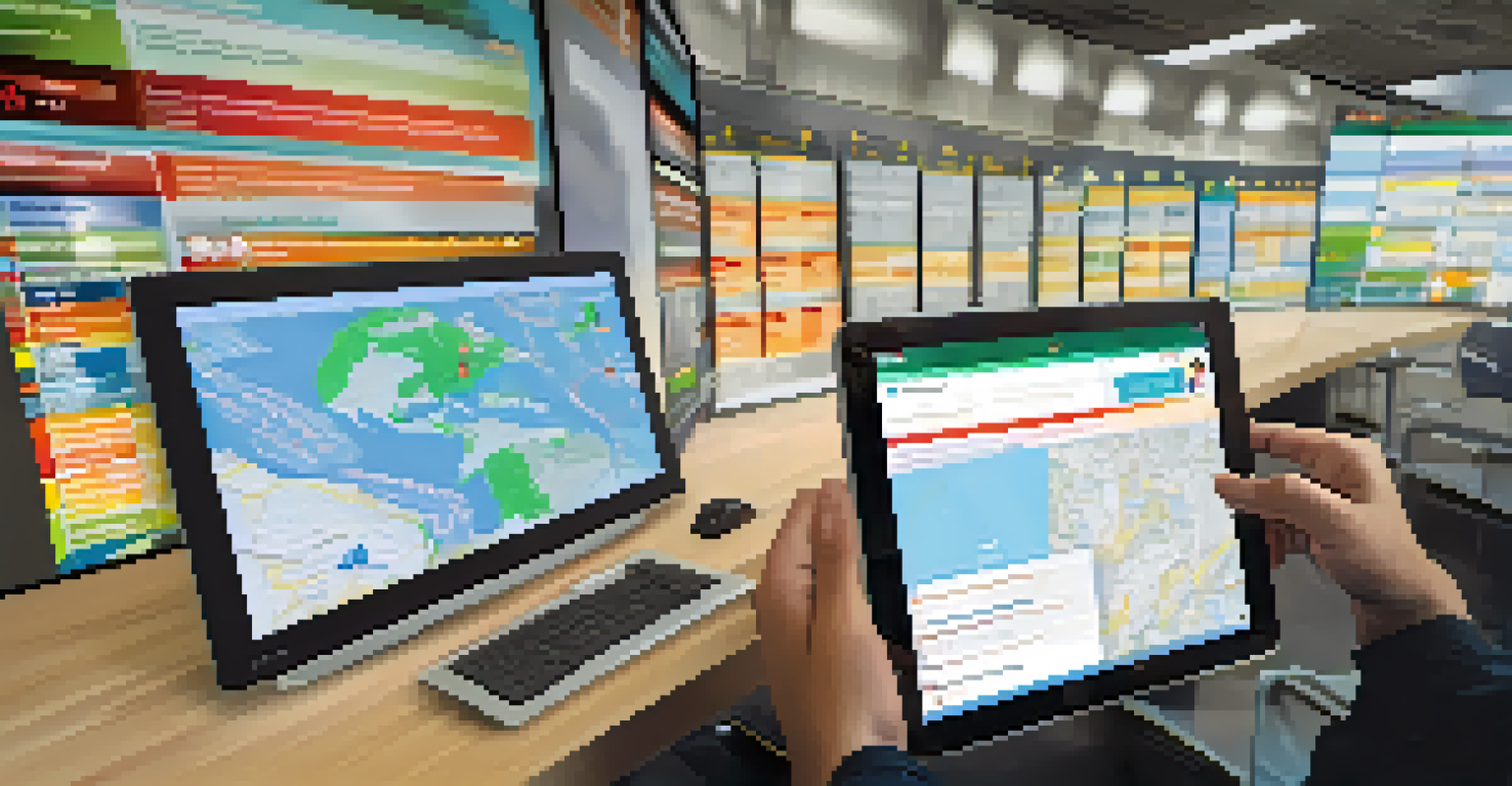Understanding Emergency Preparedness Programs in Your City

What Are Emergency Preparedness Programs?
Emergency preparedness programs are initiatives designed to help individuals and communities prepare for potential disasters. These programs often include training on how to respond to emergencies, creating emergency plans, and increasing awareness about local hazards. The goal is to ensure that everyone knows what to do before, during, and after an emergency strikes.
By failing to prepare, you are preparing to fail.
In many cities, these programs are run by local government agencies, non-profits, or community organizations. They often provide resources like workshops, informational materials, and even drills to help residents practice their emergency responses. By participating, you can gain valuable skills that could make a significant difference in a crisis.
Understanding these programs can empower you to take action, ensuring not just your own safety but also that of your neighbors and community. Remember, being prepared can turn a potentially chaotic situation into a manageable one.
Why Your City Needs Emergency Preparedness Programs
Cities face a range of potential disasters, from natural events like hurricanes and floods to man-made emergencies like chemical spills. Emergency preparedness programs are crucial because they provide a structured approach to addressing these risks. By having a solid plan in place, cities can minimize the impact of disasters and protect their residents.

These programs also promote a culture of safety and resilience within the community. When residents are informed and prepared, they can respond effectively, reducing panic and chaos during emergencies. This proactive approach can save lives and resources.
Importance of Preparedness Programs
Emergency preparedness programs help communities prepare for disasters, ensuring residents know how to respond effectively.
Moreover, by engaging with these programs, citizens can voice their concerns and needs, contributing to the development of tailored strategies. A well-prepared city is one where the community works together to face challenges head-on.
Key Components of Effective Preparedness Programs
Effective emergency preparedness programs typically incorporate several key components: risk assessment, training, community engagement, and resource allocation. Risk assessment involves identifying potential hazards in the area and understanding their impact. This foundational step allows programs to tailor their approaches to the specific needs of the community.
An ounce of prevention is worth a pound of cure.
Training is another critical element, as it equips individuals with the knowledge and skills necessary to respond effectively in an emergency. This can range from first aid courses to simulations of emergency scenarios. Community engagement ensures that residents are actively involved and informed about what to do during various crises.
Finally, resource allocation refers to the distribution of necessary materials and support systems, such as emergency kits and communication channels. A well-rounded program ensures that all these components work together harmoniously, creating a comprehensive safety net for the community.
How to Get Involved in Your Local Program
Getting involved in your local emergency preparedness program can be as simple as attending community meetings or workshops. Many cities offer volunteer opportunities that allow you to contribute directly to preparedness efforts. This involvement not only helps you learn but also connects you with neighbors who share a commitment to safety.
You can also support programs by spreading the word about their initiatives. Sharing information on social media or organizing neighborhood gatherings to discuss preparedness can foster a stronger community bond. The more people who are informed, the better prepared your community will be.
Key Components of Preparedness
Effective programs include risk assessment, training, community engagement, and resource allocation to create a comprehensive safety net.
Lastly, consider participating in drills or training sessions. These hands-on experiences can provide invaluable insights into how to respond during an actual emergency, making you an asset to your community when it matters most.
Resources Available for Emergency Preparedness
Many cities provide a wealth of resources for emergency preparedness, often available online or through local community centers. Websites from city governments typically feature guides on creating emergency plans, assembling kits, and understanding local hazards. These resources are designed to be user-friendly and accessible to all residents.
In addition to government resources, various non-profit organizations focus on disaster preparedness and response. They often offer workshops, training sessions, and materials that can enhance your readiness. Connecting with these organizations can provide additional support and information tailored to your community's specific needs.
Don't forget about local libraries or community centers, which may host informational sessions or distribute printed materials. By utilizing these resources, you can ensure that you're well-informed and ready for any emergency that may come your way.
The Role of Technology in Emergency Preparedness
Technology plays an increasingly vital role in emergency preparedness, helping communities communicate more effectively and respond promptly. For instance, mobile apps can provide real-time alerts about disasters, allowing residents to stay informed and make timely decisions. These tools can be lifesavers during critical moments.
Social media platforms also serve as valuable resources for sharing information quickly during emergencies. Many local governments use these platforms to disseminate updates and safety tips, ensuring that residents are aware of the latest developments. Being connected can give you a significant advantage when time is of the essence.
Getting Involved Locally
Residents can participate in local programs through workshops, volunteering, and spreading awareness, enhancing community resilience.
Furthermore, advanced technologies such as mapping software and data analysis help agencies identify risk areas and plan accordingly. This integration of technology not only enhances preparedness but also boosts community resilience in the face of disasters.
Conclusion: Taking Charge of Your Safety
Understanding emergency preparedness programs is essential for every resident. By familiarizing yourself with the resources and opportunities available, you can take proactive steps to ensure your safety and that of your loved ones. Preparedness is not just about having supplies; it's about being informed, engaged, and ready to act.
Remember that emergencies can happen at any time, and being prepared can make a world of difference. Whether it’s participating in community drills or simply staying informed about local hazards, every action counts. The more prepared each individual is, the stronger the community becomes.

Ultimately, taking charge of your safety through these programs empowers you and fosters a culture of resilience. So, get involved, stay informed, and encourage others to do the same—together, we can build a safer community for everyone.